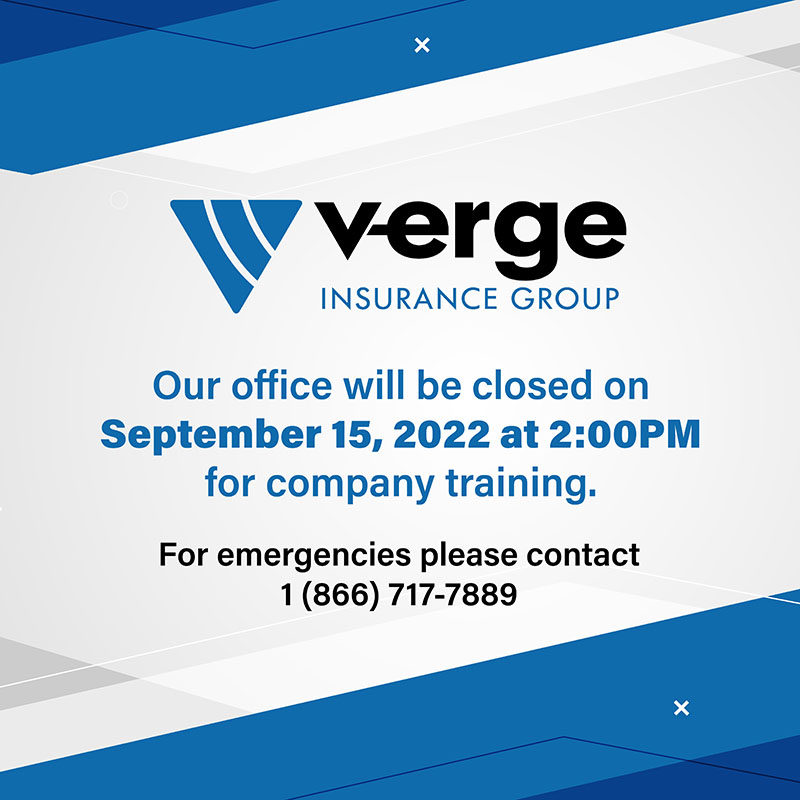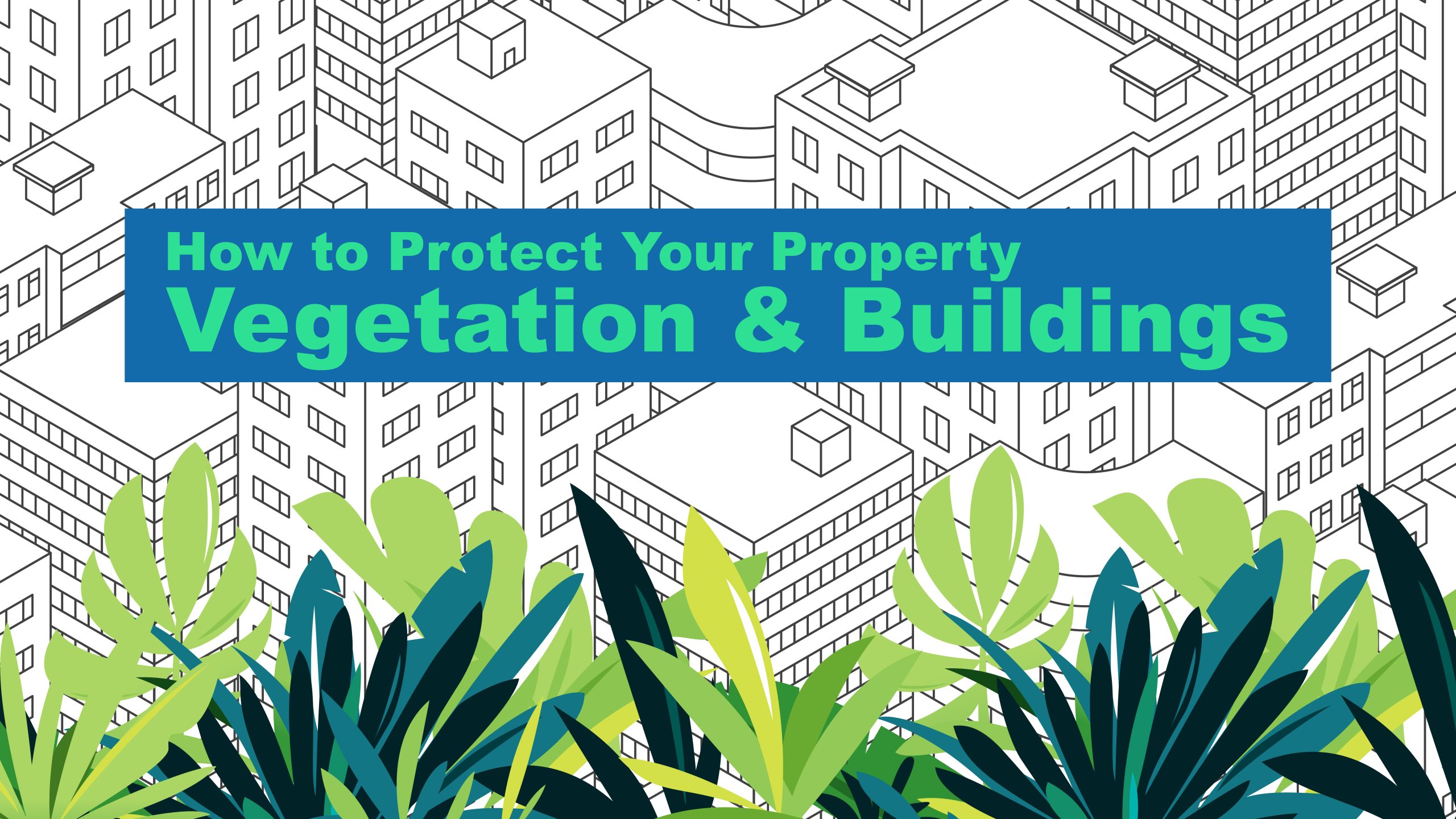
Vegetation and Buildings
May 5, 2022
Trees, bushes, shrubs and other vegetation—such as moss and ivy—can add character to the outside of a building and even offer protection against the elements. However, if left unattended, vegetation can also cause severe damage. This article discusses the risks associated with biological growth on structures and how facilities managers can mitigate them.
Risks
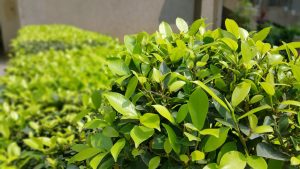 Different vegetation poses different threats to the outside of a building. Facilities managers should understand the specific risks associated with the vegetation on their property, including:
Different vegetation poses different threats to the outside of a building. Facilities managers should understand the specific risks associated with the vegetation on their property, including:
- Trees and bushes—Damage can occur if trees and bushes grow too close to a building. Since trees and bushes are combustible, having them too close to a structure may be a fire hazard. Unmaintained overgrowth of various parts of trees and bushes also creates a variety of issues:
- Branches—Branches can affect buildings in a couple of ways:
- Wind, snow and ice accumulation can cause branches to come into contact with walls and roofs, leading to exterior damage. Older, dead or otherwise damaged tree branches can fall onto the roof or passersby below. Leaf and broken branch buildup can also lead to clogged gutters, potentially resulting in ice dams or water penetration into the building.
- Branches can grow into a building, causing long-term damage to the siding and knocking shingles off the roofing.
- Roots—Root systems can infiltrate cracks in the walls, foundations, sidewalks and below-ground drains. Extensive root systems can extend beneath a building, causing foundation uplift. Roots can also leech water from beneath the foundation, resulting in the structure settling and sinking unevenly in the soil.
- Branches—Branches can affect buildings in a couple of ways:
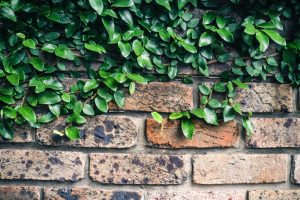 Ivy—While well-built masonry can typically tolerate the growth of ivy, the plant can damage older, weaker buildings by widening existing cracks and allowing in moisture. The weakened structure could then suffer from crumbling or displaced bricks.
Ivy—While well-built masonry can typically tolerate the growth of ivy, the plant can damage older, weaker buildings by widening existing cracks and allowing in moisture. The weakened structure could then suffer from crumbling or displaced bricks.- Mosses/lichens—Both of these plants can cause damage by attaching themselves very securely to roofing systems and requiring forcible removal. If left unattended, mosses and lichens can significantly speed up the need for roof replacement since they can cause permanent damage to the shingle. Lichens can also cause deterioration of sheet metals and other inorganic material and assist in the colonization of surfaces by mosses and other plants. The presence of mosses and lichens can result in frost-related damage, restricted moisture evaporation and blocked rainwater disposal systems.
- Pests—Uncontrolled vegetation may harbour more pests, resulting in inspects and rodents gaining access to the building.
Different vegetation pose different threats to the outside of a building. Facilities managers should understand the specific risks associated with the vegetation on their property.
Prevention
There are several actions facilities managers can take to limit or prevent risks involving trees and other vegetation on their property, including:
- Trim back trees and bushes. Keeping trees and bushes contained can limit damage from untrimmed branches. Be sure to hire qualified professionals to handle upkeep since there is a
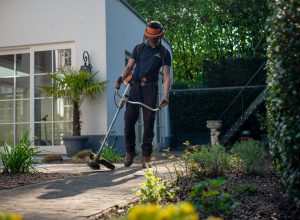 risk of injury or property damage if this task is not done correctly. If branches are encroaching from a tree on someone else’s property, be sure to check local province, area or city laws to
risk of injury or property damage if this task is not done correctly. If branches are encroaching from a tree on someone else’s property, be sure to check local province, area or city laws to - determine whose responsibility it is to maintain the tree and who is liable for any resulting damages.
- Keep water away from the building. Plants thrive in moist places, so it’s important to limit their growth by keeping moisture at bay.
- Ensure gutters are functioning correctly. If gutters aren’t cleared of debris, fallen vegetation can trap water and rot.
- Clean surfaces that show signs of growth. Use a pressure washer to blast away visible signs of vegetation growth and remove any dirt and debris that may retain moisture.
Trees and other vegetation can be beautiful additions to any landscape with proper care and maintenance. However, if left unattended, they can cause property damage to interior and exterior building structures and systems.
Recommended


